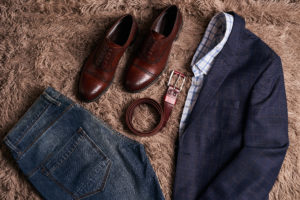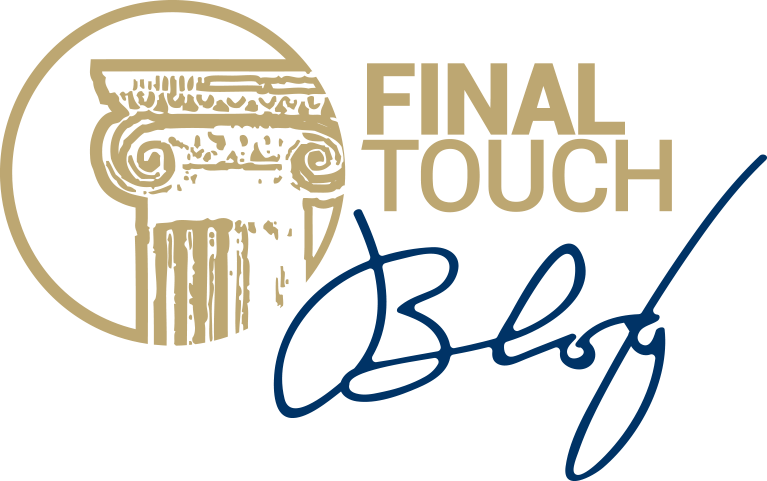
What Do Your Clothes Say About You?
Clothing is a powerful communication tool, but it is often poorly understood and vastly underutilized. In a blink of an eye, your clothing can present you as a sophisticated professional with valuable insight or someone that lacks credibility. We all know that you only get one chance to make a first impression. But did you know that clothing plays a key role in establishing you as a leader long before your words have an opportunity to be heard?
Clothing Communicates
The moment you enter a room, people assume over a dozen things about you and your competency. It is not fair, but it is real. Your appearance is your largest non-verbal communicator; it is the first and strongest clue broadcasting your “authority.” During that first meeting, others have little to go by as they attempt to understand who you are. Clothing serves as an instant messaging system that immediately sets people’s expectations for your performance. It is simple: what people see is what they expect.
Studies confirm that our clothing choices influence what people think about us. For example, one study asked subjects to look at images of men for just 3 seconds before making “snap judgments” about them. In some pictures, the man wore a custom, tailor-made suit. In other pictures, the same man wore a very similar suit that was bought “off the rack.” The man’s face was hidden and the differences in the suits were minor. After a 3 second exposure, subjects not only viewed the man in the tailor-made suit more favorably, they rated him more confident, successful, and a higher earner. Studies are also showing that the clothes you wear influence your mental and physical performance by changing the way you think!
What you choose to wear matters! Although clothing choices drastically impact how people perceive you and how you perform, many people do not take these choices seriously and find themselves overlooked for promotions in favor of those who know how to dress for the job. Is your clothing a stumbling block or a stepping stone? Is it supporting your professional goals or holding you back? Do you know?
We do not “see” ourselves as others do. For many of us, our wardrobes have changed little over the years. Somewhere along the way, we found a system that worked (that powder blue, polyester suit looked good!) and then got stuck. Can you imagine using the same technical skills that you used 10—or even 5 years ago? If you did, you would likely find yourself out of a job. Like technology, view clothing as a constantly evolving communication tool, and find what works for you in your industry. You do not need to be a fashionista unless, perhaps, you work in the fashion industry, but you do need to be current and appropriately professional. Do you know how to step it up when needed?
You Entered the Room and Your Clothes Said What?
A man who shows up at the office dressed in a dark, tailored suit, a crisp, white dress shirt, a striped tie, and wingtip shoes is likely to be perceived as an executive—as someone who has high authority. At the other end of the spectrum, a characteristic low authority outfit is a pair of light washed denim jeans and a t-shirt branded with a large logo. At Final Touch, we train participants to use a tool called the Authority Scale™. The Scale ranks various clothing elements from low to high authority, enabling participants to choose clothing that communicates the level of authority appropriate for their needs.
Want to put together a “high authority” outfit? Choose tailored clothing that has straight lines, darker colors, strong contrast, and firm fabric (to name just a few elements). Adding a collar and a jacket always “ups” your authority level. Want to appear more approachable, with less authority? Select untailored clothing that has curved lines, lighter colors, and soft fabrics.
If you want to exude authority at work, are you stuck sporting a 3-piece suit? Thankfully, no! You must know your environment. A traditional suit is not appropriate for every work environment. Many companies have adopted more relaxed dress codes (if they have a dress code at all!) that include jeans. However, even when wearing denim, you can make strategic clothing choices that boost your authority!
 For high authority, select jeans that are dark washed, free of tears, and pressed. Avoid jeans that are either skin tight or baggy. Pair your jeans with dark, thin soled, leather shoes, a matching leather belt, a light-colored, button-down shirt, and a structured jacket. Pay special attention to the details; they matter.
For high authority, select jeans that are dark washed, free of tears, and pressed. Avoid jeans that are either skin tight or baggy. Pair your jeans with dark, thin soled, leather shoes, a matching leather belt, a light-colored, button-down shirt, and a structured jacket. Pay special attention to the details; they matter.
Your clothing is always saying something about you. Take control of your messaging and make your clothing work for you! If you do not know where to begin or how to take your clothing to the next level, we can help.
How do you want to be remembered?™



Dear Deborah King,
Each time I read any of your articles, I am amazed. You are not just varsatle and deep in knowledge but your very rich yet simple style of presentation makes it compelling for best decision/s.
As I have said aforetimes, I look forward to participating in your courses any day and any time.
How about recommending and displaying pictures of women’s clothing that would project authority and approachability? Thanks
Dear Margaret,
Thank you for your feedback. I am delighted that you find the articles interesting and beneficial. If you have a topic you would like us to cover, please let me know!
Our Art of Confident Living weekend would be a wonderful opportunity for you. I do hope you can join us one day.
With kindness,
Deborah
Thank you for your question. Women would follow the same guidelines as men. For high authority, they would select dark denim, paired with a light colored blouse, and fitted jacket. Frankly, finding images of appropriate business dress for women is very difficult. Most images are either too sexy or too casual. As a result, we are working on creating our own.
This is such an eye-opener with the versatility of wardrobe affecting competency, expression, and authority. Women’s clothing is rather difficult to pin down to a standard due to different builds and leniency of dress codes in many workplaces but I would be interested in seeing a study based on women’s attire.